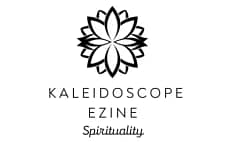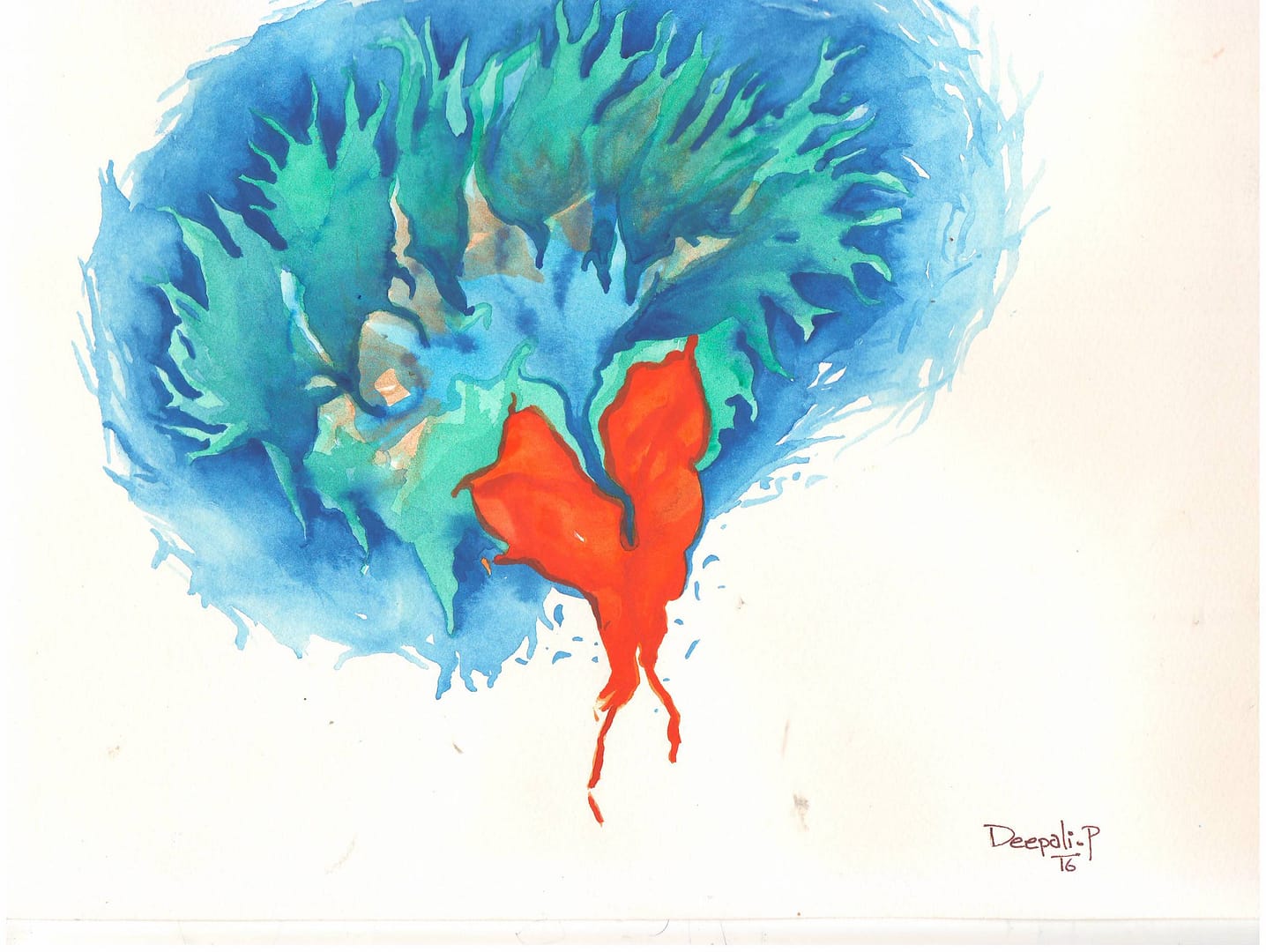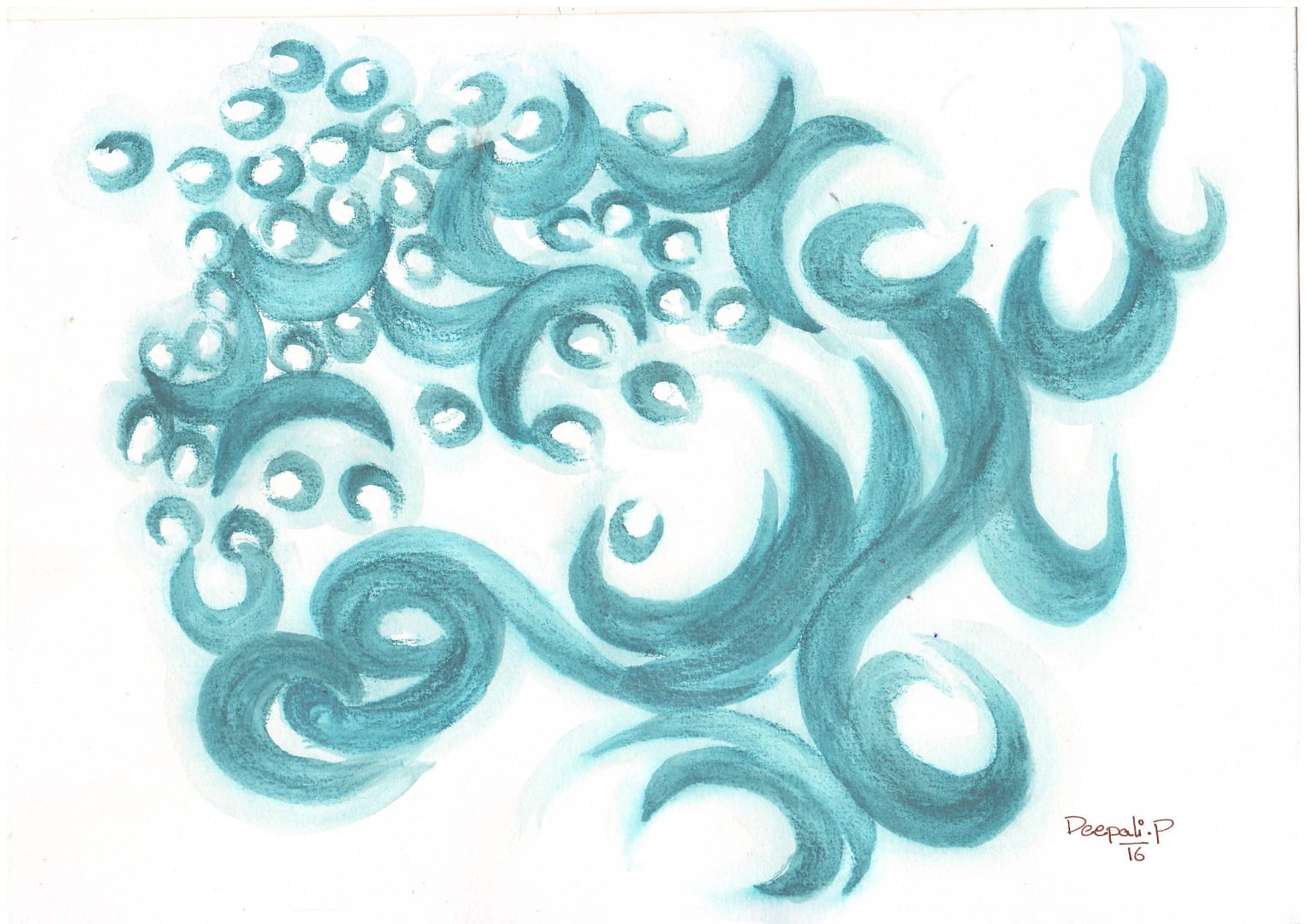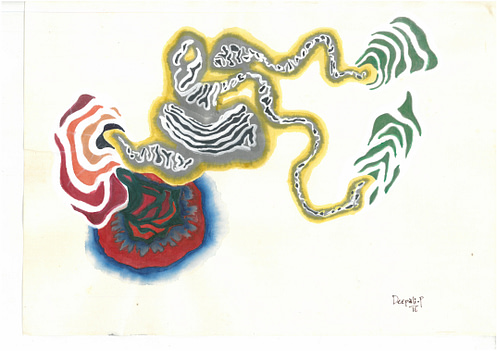 Can art be a healing force for people with mental disorders like Dementia, Alzheimer’s, Schizophrenia etc.? How?
Can art be a healing force for people with mental disorders like Dementia, Alzheimer’s, Schizophrenia etc.? How?
Art Expression has been and is vital not just for people with disorders but all living people.
First let’s consider the very premise of art – when you sit with a blank paper you are in the same territory that life offers, i.e. Unknown. There is nothing ahead of you. You don’t know what you are going to paint just like you don’t know what you want to do in life. But from instinct you know the paper is inviting you to “express” yourself in just about any way you would like to. Similarly life is always inviting you to do something, anything. So you begin with one stroke and soon find that another can follow in a curve or another in a line or a dot and so you just follow the lead of the former stroke and carry on, until you step back and “find” that you like what you have created or don’t. Isn’t that similar to what happens in life too?
[pullquote-left]“Essential art practice allows one to navigate ones fears, inhibitions, blocks, concerns, worries, thoughts, choices and teach one’s self to grow (up) and keep growing.”[/pullquote-left]
Why am I drawing this comparison?
In this process what, essentially one ends up feeling is – motivated, inspired or curious enough to just carry on. Curiosity comes alive and even a sense of adventure will fill you. What one is actually exercising is the muscle of exploration and expression and in turn begins to hone ones instinct of survival, figuring newer ways to respond to that curiosity, in turn also honing ones intuition which is the guiding principle of traveling any unknown territory, be it life, ones developing emotions and feelings or a new relationship/job/country. This process essentially anchors oneself in that dimension of guidance that comes from one’s sense, body and mind (past experiences).
The overview – In essence we are born as creative and expressive creatures in the unassuming ease of playfulness and when far removed from our very essence, our natural expression of being alive, we then enter the dimension of confusion which depletes our sense of curiosity and exploration leading to illnesses of all kinds, not just mental or emotional. And in extreme cases makes us want to kill ourselves when we can no longer identify or nourish this natural curiosity/ability to express/playfulness that we were born with.
So those who identify with art as a way to express the myriad emotions, feelings and thoughts are engaged in the process of nourishing their inner psyche, the child within, the curiosity that gives them meaning and direction in life. It also allows one to stay in the here and now and not go too far in the future or past. Since art expression needs the mind and emotions to be expressed through the body. This fantastic combination of these 3 brings about a slowing down more natural to the rhythms of each person, thus making one feel secure and at home under ones skin.
Daily Practice
After just a few minutes of such a practice daily, one may find oneself being filled with new energy, new motivation, direction, will and curiosity enough to then get up and address other challenges of life like job, relationships, health or to answer that difficult email etc. which may be daunting or stressful to begin with.
Essential art practice allows one to navigate ones fears, inhibitions, blocks, concerns, worries, thoughts, choices and teach one’s self to grow (up) and keep growing.
[pullquote-right]“This mere “permission” to keep a safe place to create, express, explore, wonder about by myself to myself began to heal me. This healing rippled outwards and cured my IBS and stomach disorders that persisted since 20 years and affected an overall prosperity in all other areas of my life.”[/pullquote-right]
Hence art is not just for the sick and ailing but for every living person – president or pauper. Which is why in the earlier times the communities which were established on art, dance, music, story-telling, poetry, scientific inventions and such attitudes of explorations, prospered and thrived longer and flourished to become strong, exemplary economies and countries to reckon with even today.
The practice and process of engaging with any art is a healing and restorative process of our built-in curiosity, creativity, imagination and playful ease that we were programmed/sent to live life with.
Anxiety or depression can hamper mental well-being, what do you suggest people should do when faced with an anxiety attack or suicidal thoughts? (apart from seeing a psychiatrist)
1. Re-Orient Yourself:
In my 35 years of conscious and aware study and healing my own anxieties and depressions as well as that of numerous patients I found when I began cultivating a more meaningful relationship with the cause of my anxiety/depression, when I began to pay more attention to what was “causing” these symptoms. To my pleasant surprise I discovered that these were nothing but the feelings/guides which were pointing towards my gift of being an intensely creative and adventurous mind and the suppression of these gifts caused both extremes of anxiety and depression.
When I began to fully accept this, by therapeutic writing and painting and in that way began spending time with the voice which was talking to me about what I had not allowed myself to hear I began to heal. By allowing my child to come out and play in those safe spaces, I began to excess my own wisdom and intuition.
This mere “permission” to keep a safe place to create, express, explore, wonder about by myself to myself began to heal me. This healing rippled outwards and cured my IBS and stomach disorders that persisted since 20 years and affected an overall prosperity in all other areas of my life.
At one point, this was reaffirmed when I studied the lives of creative people and learnt that there have been many artists, writers, performers who have gone through the agonies of anxiety and depression and I am just one of them. That this anxiety/depression is ONLY the process of creativity and once I find a new way to articulate myself into, it passes and great ease, joy and even bliss was experienced.
It is times when one cannot create space enough to express these impulses, nor even justify to oneself enough to allow such an expression is when one experiences anxiety or depression and then the spiral can continue to get complex and go downwards from there.
Let’s look at our general approach to emotions and feelings arising in our children. How many times do we tell a child not to cry, not to be angry, not to shout, not to laugh too loudly? We do this mainly because it’s waking up our own unmet needs and since we are now conditioned to NOT express difficult emotions we go and disallow our children too. The adult subconscious is programed enough to self-suggest “not to”.
What to do when you are going through anxiety or depression?
2. Make it Okay:
If you are hyper ventilating, not breathing, crying, choking or angry, frustrated, irritated – sit down and breathe. Take a paper bag and breathe from the mouth.
When you are relatively calmer at that moment – First give yourself the permission to express, speak your mind, be honest about your feelings of that moment. If you cannot find anyone safe, non-judgmental to talk with, then write or draw them or speak them out in gibberish. Tell yourself out loud, “It’s okay to feel whatever I am feeling right now. I am not the only one upset/angry/sad/scared”. In any way make it Okay to “go through this experience” and remind yourself that “like always this time too this will pass”. Any care giver/family member needs to be aligned to this process and reinforce the same through their actions, words and attitude whenever the episode occurs.
3. To Ask For Support and Help:
It’s okay to have to need medication or see a psychiatrist or a counselor but try and create a new understanding of this part of you, the child in you, the creative, expressionist in you that needs ONLY YOUR attention first and then YOUR permission to come alive somewhere safe (non-judgmental).
I have not come across a more effective alternative to rapid, sure and non-reversed healing then to working on a real act of expression like writing, painting, poetry, music, dance or theater to make a lasting or complete comeback to a harmonious, balanced state of being. Hence working with an art/creative therapist alongside mild medication has known to help make complete recovery in many cases, such as mine own.
PERSONAL VICTORY
With regular therapy I designed for myself with art, clay sculpting, movement, and writing for 4 months, alongside homeopathy, acupressure and empathetic listening session with a counselor I was able to cure my IBS and GERD up to 80% and the 0.25mg of antidepressant I was taking for 3 years was tapered off and finally stopped in this period after suffering this stomach disorder for over 20 years.
Even in full blown cases of a panic attack or breakdown – clay therapy, working in soil, on farm, gardening, running, cycling, vigorous dancing or just sitting in the accepting presence of a friend or family member who makes it OKAY to have to undergo an extreme emotion/feeling has shown progressive results.
It is more important for the care givers of people suffering from such disorders to cultivate the right understanding then for the patient themselves.
Think of a child going through hyperactivity or is angry or is howling at some point, what does one do? If you stop him/her it may only aggravate. But you give him something to break, throw, to tear or wrestle or just allow him space to express that emotion and soon he will learn to self-regulate and calm down.
4. Do Not Try to Fix:
When a dear one is in an ‘undesirable’, ‘unharmonious state’ away from his or her natural state of peace and harmony it deeply disturbs us and our primal instinct is to ‘fix’ it as quickly as we can and bring things back to harmony. We tell that person, “don’t cry, don’t shout, don’t get angry, don’t swear” because, primarily, we have not seen anyone model any other way of handling such a situation for us before in any other way then shutting it out.
This very attempt to FIX externally and NOT ALLOW the person/child to decide his own unique course of coming to himself kills not just the uniqueness in the individual but his process of creating the identity unique to him.
[highlight]ALL cases, without exception are only attempting to form their own unique selves and any attempts from the intention to FIX only worsens the case even to the point of no return, when that individual can no longer find his/her creative way back and thus be termed ‘insane’, ‘mentally or emotionally challenged’, ‘dysfunctional’.[/highlight]
Misunderstanding the Gift as Disorder
The good side is, those who have identified their uniqueness and sought to work on what their anxiety is all about have even found out that they belong to a rare category of people known as HSP’s – Highly Sensitive Person, (ref- research by Dr Elaine Aron and the book by that name).
There are about 15 – 20% of people in the world who are HSP’s – born with rare and unique gifts like talking to animals, gifted teachers, artists, singers, dancers, performers, architects, designers, poets, healers, empaths, advisors, conflict resolvers, counsellors, innovators, inventors, extraordinarily good with medicine, cooking, and inventiveness etc. When allowed to spend time by themselves with a nurturing engagement from others these children and adults have turned around and become pioneers in their fields. They balance the other 80% who have the gift of doing and not so much of being.
I discovered that I am an HSP 4 years back and this radically shifted my relationship with my life long trauma. I knew I could feel more, sense more and understand more than the usual people in my life. I accepted my pain as “acute ability to sense emotions, ideas, situations, images etc and began to develop them further. I now hold support groups of HSP’s in India.
Try and think of Van Gogh and his cutting off of his ear. Was he self-destructive, going ‘insane’ or was he really struggling to find just the right expression of an idea to bring alive through his painting and could not find one and hence felt the ‘need’ to cut off his ear only while that phase lasted? If he had someone to “bounce” his thoughts off of maybe he wouldn’t have gone earless.
In Society at Large
‘Normal people’ or those not deeply affected by any mental or emotional disorder may identify with this thought that Indian society does not allow such time consuming spaces of “being by our self” and life is thrust upon us with an itinerary to follow. Thus we are made to accept the tried and tested ways leading us eventually to mid-life-crisis and needing time to reinvent ourselves, make new choices, alter our life style or tend to physical ailments.
Thus, mental disorder is not for those who suffer it visibly but every individual goes through it in even mild degrees whether he or she knows or not.
Any example you’ve come across as a therapist which reinforces the belief in art as a therapy for mental wellbeing?
A young girl, let’s call her Uma, 26, working in an IT office came for art therapy, reporting ‘paranoia’. She said she was hearing voices, afraid that someone was following her all the time, hacking into her emails and threatening to kill her. She was at a stage where she knew this was unreal and yet she could not get rid of this false feeling that had begun to give her sleepless nights and bad health. She was further threatened that if she did not resolve this soon, she would lose her job and the newly married husband might leave her.
[pullquote-left]“‘Normal people’ or those not deeply affected by any mental or emotional disorder may identify with this thought that Indian society does not allow such time consuming spaces of “being by our self” and life is thrust upon us with an itinerary to follow.”[/pullquote-left]
Note – in any extreme state of being the individual herself, most often, knows what will work. At such times ones intuition guides one more powerfully and accurately then when one is in a state of harmony. Like the one drowning can see the end of a rope better than anyone on the shores.
Uma had a memory of having a happy and safe time while painting in the past.
In the 6 sessions, she came for, I took her through a hand holding process of painting and eventually to start a dialogue with her fears. She felt increasingly safe in that space when the paper, paints and brush were at her disposal to serve/help her while she attempted the scary stuff of listening to her deepest fears.
In 10 sessions Uma not just got rid of those unreal feelings and thoughts but developed a strong grip on the fact that she always had a deep desire to paint and write in her mother tongue. She validated this need in as many ways and gave herself permission to engage in this expression. She then made a daily practice to exercise this intent and within 2 months painted 6 paintings which were invited for art shows (one from her own IT office) and she began to write stories that got published later. In a years’ time she had a baby and continued to keep up with her practice of ‘expression’ more and more effortlessly and enthusiastically.
Thank –You!

 Can art be a healing force for people with mental disorders like Dementia, Alzheimer’s, Schizophrenia etc.? How?
Can art be a healing force for people with mental disorders like Dementia, Alzheimer’s, Schizophrenia etc.? How?



